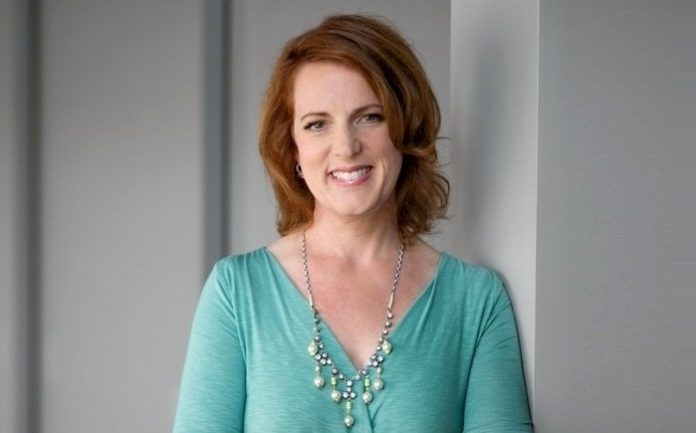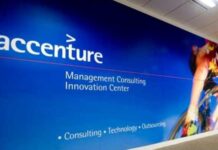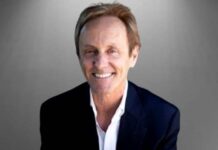Super exclusive conversation with Whitney Johnson, Disruption and Innovation Theorist, Author, and founder of boutique consultancy WLJ Advisors and is one of the fifty leading business thinkers in the world as named by Thinkers50.
Whitney is an expert on helping high-growth organizations develop high-growth individuals, she is a frequent lecturer for Harvard Business School’s Executive Education and an executive coach and adviser to CEOs. Whitney is formerly an Institutional Investor-ranked stock analyst at Merrill Lynch. And after co-founding the Disruptive Innovation Fund with legendary thought leader Clayton Christensen, she adapted the concept of disruption to people.
She’s codified her frameworks of personal disruption in the award-winning books Disrupt Yourself and Build an A Team, both published by Harvard Business Press. In 2019, Whitney was ranked by Thinkers50 as one of eight finalists in the Leadership category, #1 Talent Coach and Leading Global Coach by Thinkers50/MG100, and placed #3 on the Global Gurus’ list of Top 30 Organizational Culture Professionals. In 2017, she was selected out of 16,000 candidates for Dr. Marshall Goldsmith’s 100 Coaches program. She is a Linked Influencer with more than 1.7 million followers and hosts the weekly Disrupt Yourself Podcast.
Q- Tell us about your Amazon bestseller “Build an “A” Team: Play To Their Strengths and Lead Them Up the Learning Curve” and “Disrupt Yourself: Putting the Power of Disruptive Innovation to Work”. And which is your upcoming book?
I just released a second and somewhat revised edition of Disrupt Yourself with Harvard Business Press, with a slightly different title—Disrupt Yourself: Master Relentless Change and Speed Up Your Learning Curve. I’ve refined and expanded the ideas in the original book based on insights I continue to develop as I work with individuals and organizations. The original a-ha moment that underpins Disrupt Yourself occurred when I was working in investing with Clay Christensen. I realized that disruption isn’t only relevant to products. People are disruptors too. The second big insight was that the S Curve model that we employed to gauge how quickly an innovation would be adopted and gain momentum in the marketplace, could also help us understand and model how people learn, develop and grow. I refer to it now as the S Curve of Learning. The original Disrupt Yourself and the new edition provide a framework for people to apply these ideas to themselves to become high growth individuals through personal disruption. Build an A Team is directed to managers, team leaders, executives, HR personnel and others who want to help facilitate those they lead or work with leverage the personal disruption framework to become high growth individuals in order to build an organization that can innovate, that remains vibrant and doesn’t stagnate over time.
Q- Human Resources are dealing with major existential challenges to remain relevant within its organization. How does the Disruptive Innovation model help Human Resources?
The Personal Disruption model has a lot to offer Human Resources. The premise is simple. Human beings are learning machines. We want to be in positions where we DON’T know how to do things and have to figure them out. Instead of following the conventional practice of recruiting and hiring the most (over-) qualified applicants, who are often quickly bored with their position, I encourage HR to seek job candidates with high potential for learning. I advocate for bringing people on in roles where they begin at the low-end of an S Curve of Learning, where there is room for growth. Understand and monitor where individuals are on their personal learning curves, whether the entry-level of the curve, the sweet spot of high growth and productivity, or the high end where fatigue and disengagement can lead to decline. Use the model to learn how to develop and retain high-quality talent. Do more internal hiring as positions open to optimize what you learn about employees’ growth capacity as they work for you over a period of months and years. Use the digital tools available to simplify HR work, but don’t abdicate these assessments of capacity and growth to programs that can’t identify the desirable nuances.
Q- How can HR design a new value proposition and employee experience model, that responds to the evolving demands of business and future workforces?
Simplify. Allow each person to take responsibility for their own learning. We offer a diagnostic to help individuals and their managers understand where they are on their personal learning curve and encourage its administration organization-wide. This establishes a baseline from which to instinctively know when they are not playing to their strengths and being utilized as well as they could be. Not only should they be allowed to move; they should be encouraged and facilitated to do so. Also, reframe the discussion about hierarchy in job roles: when people jump from the top of a curve where they’ve exhausted the potential to learn, to the entry-level of a new curve where they’re a novice with a lot to learn it’s not a step-down. It’s finding the right place where a person can make the most meaningful contribution because they’re learning, growing and highly engaged and productive. When individuals win, the organization they contribute to wins.
Q- How to transform the HR processes to build a truly “Agile” Human Resources Function?
The Personal Disruption framework seeks to capture the natural dynamism of human beings in the workplace, where individuals are increasingly agile and inclined to make many job moves over the course of a career. Rather than moving in a manner that is haphazard for both the person and the organization, however, the goal is to be strategic in disruption to maximize personal and organizational growth and to retain top-quality talent in-house to the degree that it is possible, rather than constantly having valuable human resources drain away to competitors. The S Curve of Learning models a dynamic process where an individual will spend an average of three to four years in any given role. Understand where people are on their curve, and what they need to optimize growth in that stage. For 6-12 months at the low-end, they need support as they get up to speed, the sweet spot accelerating up the back of the S Curve requires stretch assignments, new projects, malleable teaming to take advantage of and extend the phase from competence to mastery. Conversations about the next role need to be ongoing so that people understand that there will be a new S Curve of Learning, a new growth opportunity, available to them as they max out the potential at the top of their curve. As people shift, so does your organization. Think of people as a resource like other resources invested in the organization and snapshot every six months like a balance sheet.
Q- What is culture to you and how Human Resources can play a vital role in shaping and evolving a culture aligned with their business strategies and higher-level purpose?
Culture is what you do. When the growth of people is a front-and-center cultural priority, many challenges organizations face starting to evaporate. If people know they have a place to play to their strengths and grow them (the first accelerant in the framework of personal disruption), then they are remarkably motivated. When they are learning and engaged, rather than bored and disengaged, the workplace is vibrant and productive. Or when they realize that HR cares about them, as individuals, they can feel an increased sense of belonging OR they feel safe to recognize and act on the recognition that a given role or company isn’t the right place for them. People make a lot of bad decisions because they want to belong or be noticed. HR helps people come first in organizational culture and this can solve many problems.
Q- How can HR utilize technology to truly understand the needs and motivations of employees?
The first step is to establish knowing and understanding employees as a value and a priority. We all know this isn’t always the case—may be not even often the case. Make sure that employees know that their ability to thrive is regarded as central to the organization’s prospects for success.
Once this is articulated and exhibited, employees will be more willing and able to participate in using digital tools that can help HR monitor the well-being of people and the health of the organizational culture. Programs like Motivosity offer an avenue for colleagues to recognize the contributions of their co-workers. TINYpulse allows employees to offer feedback anonymously and informally, while better-known applications like SurveyMonkey and Google Forms can be used in more formal ways to gather information on how your people feel about the organization, what they applaud, and what they wish would change. I almost hesitate to single out specific applications by name; there are a number of options available and doubtless many in development.
In connection with the framework of Personal Disruption, we have developed the S Curve Locator, a digitally administered diagnostic that helps identify where people are on their individual S Curve. It helps them, their managers, and relevant HR professionals how well-calibrated their employees—and therefore their organization—are for growth, and what opportunities for learning and support will help optimize that potential.
Q- What does ‘Great Team’ mean to you and how to build a great team and culture?
The bottom line for me is that a great team is a high growth team that is comprised of high growth individuals, whether it’s a team of two or 10,000. High growth individuals are people who learn, and then leap to repeat. People who disrupt themselves to remain fresh, learning and innovative. The person or organization who builds a great team is the one who makes this a priority, has a strategy to manage this process and facilitates to make it possible.
Q- How the generation shift is increasing the need for innovation and what should organizations do to attract retain future workforces?
The younger generations are used to “on-demand.” That includes on-demand opportunities. If they don’t like the S Curve you hand them, they will want to jump to a new one, maybe with your organization if a learning opportunity is available, but elsewhere if you can’t accommodate their needs. At the same time, if they know you are invested in helping them occupy and climb an S Curve with genuine, meaningful space for them to learn and grow, they are more likely to stay. Retaining employees is a challenge. These are highly mobile generations permeating the workforce today. It’s important to remember that there is energy in movement and that personal disruption is a catalyst for innovation and an energetic, high growth organization.
Q- How do you see the top 5 HR Trends for 2020?
Well, of course, the digital transformation of HR will continue. I hope it will be accompanied by an awareness that we don’t adopt new technology just for the sake of using it. It’s important to understand what we want to achieve with it. In the case of HR, we want happier, more engaged, more productive people, a more productive organization. I always say that an organization is just a shell. It’s the people who animate it and make it grow—or not.
I’d like to see a little pushback against fully automating HR functions; I believe we use the technology to augment and support but maintain the human intelligence factor in HR decision-making also. People are non-linear and potential is not easily quantified.
I’m hoping to see more organizations learning to hire for high potential, rather than greatest proficiency.
I’m advocating for HR professionals to more consciously strategize hiring and movement of employees internally, rather than always going for the shiny new penny hired from outside, which is always an unknown.
Finally, I see an opportunity for HR professionals to net some high value, economically priced human resources by hiring from unconventional ponds where other organizations don’t readily fish. Think of recruiting on-rampers, remote workers, part time / gig workers, older workers, interns and so forth. Look for the hungry prospect; they’ll reward an opportunity with their best efforts.
Q- What is your piece of advice to HR leaders?
High growth organizations need high growth individuals. If your organization is going to get where it wants to go, it’s your people who are going to take you there. You need people who can keep up, who are calibrated for growth. Your organization is a shell. It’s the people who animate it and make it grow—or not. And you make it possible for people to grow.
Thank you, Whitney!
Subscribe to our Daily Newsletter!









